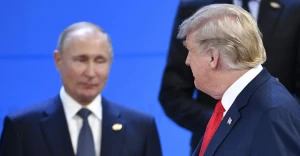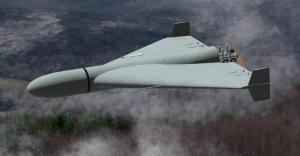
Three years of fighting: war, peace, or something in between?
A full-scale war with Russia has been going on for three years now, and it has not given up its attempts to capture or destroy Ukraine. However, the scale of the conflict is forcing both sides to seek diplomatic solutions, which everyone expects this year, especially due to Donald Trump's position
Contents
1. Full-scale invasion timeline: from 'no war' to victory and just peace
2. Ukraine's military strength: from volunteer-driven resistance to mass drone production and heroic defense in Donetsk region
3. Peace talks: from 'we've been here before' to 'this time it must work'
Espreso will review the key milestones of the full-scale war against Ukraine, how Ukraine’s Armed Forces have changed, the situation on the frontline, and what to expect in the near future.
Full-scale invasion timeline: from 'no war' to victory and just peace
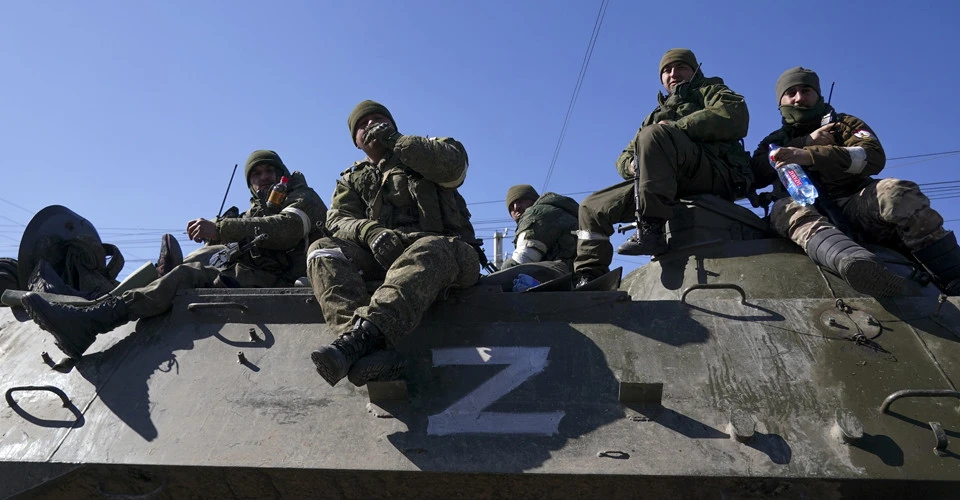
It all began early in the morning on February 24, 2022. That day, not only Ukrainians but the entire world woke up to shocking news: Russia launched a full-scale invasion of Ukraine. Around 4 a.m. Kyiv time, Russian leader Vladimir Putin made a televised address, announcing the so-called special military operation aimed at the "demilitarization" and "denazification" of Ukraine. These words were merely a cover for the aggression Moscow had been preparing for years. Within minutes of the speech, Russian missiles struck airfields, military facilities, and cities across Ukraine. Ground forces crossed the border from the north, east, and south, including the occupied Crimea and Belarusian territory, which became a launching pad for the attack.
However, in reality, this war was not unexpected. It became the culmination of the Russian-Ukrainian conflict, which had been smoldering since 2014, when Russia annexed Crimea and ignited separatist movements in Donbas, creating puppet "republics" — the Donetsk People’s Republic (DPR) and the Luhansk People’s Republic (LPR). For eight years, Ukraine resisted hybrid aggression: combat operations in the east, economic pressure, and information warfare. But the full-scale invasion moved the conflict into a new, much more brutal phase, for which, unfortunately, Ukrainians were not fully prepared. Until the last day, the government assured the public that there would be no war. Therefore, after the fact, actions were taken for a large-scale defense: martial law, mobilization, and the deployment of troops to positions, among other measures.
The first days of the war were chaotic and dramatic. Russia expected a quick victory. Its plan envisioned the rapid capture of Kyiv — "within three to five days," according to Western analysts, who based their assessments on the Kremlin’s belief in the weakness of the Ukrainian army and the lack of will to resist among the people. Columns of armored vehicles advanced toward the capital from the north through the Chornobyl zone, and airborne troops landed in Hostomel, attempting to capture the airfield as a foothold. But Ukraine did not surrender. The armed forces, territorial defense, and ordinary citizens fought back. The battles for Kyiv, particularly in Bucha, Irpin, and Hostomel, showed that Russia had underestimated its opponent. Meanwhile, in the east and south, the occupying forces advanced more quickly, capturing parts of the Kherson region and approaching Mariupol, but stalled in Kharkiv, Sumy, and Chernihiv regions.
March 2022 became a turning point. The Russian offensive on Kyiv faltered. Ukrainian forces, supported by widespread civilian resistance, thwarted Russia’s plans. At the same time, the world witnessed the horrors of war: destroyed cities, the bombed theater in Mariupol where hundreds of civilians were sheltering, and the mass killings in Bucha, which would later be called genocide. By the end of the month, Russia withdrew from the north, leaving Kyiv, Chernihiv, and Sumy regions, but concentrated its efforts on Donbas and the south. Mariupol became a symbol of tragedy and heroism: the defenders of Azovstal held out until May, despite the siege, starvation, and constant shelling. The city fell, but at a tremendous cost for Russia.
The summer of 2022 brought a new phase. Western democracies united around Ukraine, and the Ukrainian Armed Forces received their first significant supplies of NATO weapons, including American HIMARS, which allowed them to strike Russian ammunition depots and command posts. Initially, Ukrainians liberated Zmiinyi Island, and in August, the Ukrainian military began preparing for a counteroffensive. In September, a breakthrough occurred: a rapid operation in the Kharkiv region freed Izium, Balakliya, and Kupiansk, forcing Russian troops to flee, abandoning their equipment. In November, another victory came — the liberation of Kherson, the only regional center captured by Russia since February 24. However, the joy of Ukrainians was tempered by the pain of news about the atrocities committed by Russian soldiers in the liberated territories.
It was at the end of 2022 that it seemed Russia might finally abandon its ill-conceived plan to capture Ukraine. Moreover, military failures intensified the question of using nuclear arsenals — the Kremlin came close to it, but the intervention of the U.S. and China forced Putin to back down from using the most terrifying weapon. Instead, Moscow decided to change tactics, resorting to mass terror, launching missile strikes on energy infrastructure, leaving millions of Ukrainians without electricity and heat during the cold months. The Kremlin sought to break the moral will of Ukrainians, but this only strengthened their resolve.
2023 became the year of prolonged battles, with almost no territorial changes. Ukraine launched a major counteroffensive in the summer, aiming to break through Russian defenses in Zaporizhzhia and Donbas. Progress was slow: the Russian army created deep defensive lines, mined fields, and deployed reserves. As a result, the operation did not yield the desired results. Instead, Bakhmut, which Russian troops captured in May after months of bloodshed, became a symbol of the war of attrition.
By the end of 2023, the front had stabilized, but fighting did not stop. Russia continued to attack civilian cities and villages using drones and missiles. Ukraine responded with strikes on military targets in Russia and occupied Crimea, demonstrating that the war had consequences for the aggressor as well. Now, Ukrainian drones are capable of hitting targets in Russia thousands of kilometers from the border.
Ukrainians also managed to neutralize Russia’s dominance in the Black Sea by combining innovative technologies, bold operations, and strategic adaptation, despite the lack of a powerful fleet. A key moment was the destruction of the flagship of the Russian Black Sea Fleet, the cruiser Moskva, by two Neptune missiles, which demonstrated the vulnerability of Russian ships and undermined their confidence. Subsequently, Ukraine deployed a large-scale use of maritime drones, such as Magura V5 and Sea Baby, which attacked and sank or damaged dozens of vessels — from large landing ships to patrol corvettes. This forced the Russian Black Sea Fleet to retreat from Crimea to Novorossiysk, effectively losing control over the western part of the sea. As a result, Ukraine was able to unblock the grain corridor, which began to fill the budget with funds.
Western support — weapons, finances, and sanctions against Russia — remained and gained momentum, although there were hesitations due to internal political debates in the U.S. and Europe. In particular, the biggest issue was the delay by American legislators, who left Ukraine without funding for half a year, which immediately affected the Russian advance in Donbas, which was only recently stabilized. Furthermore, Western allies promised Kyiv more than they could (or wanted to) realistically provide. For each new weapon system (tanks, air defense, aircraft), diplomatic battles had to be fought for months, if not years. NATO countries, feeling unprepared, feared direct conflict with Russia, especially due to its nuclear potential. Therefore, the so-called Russia’s "red lines" became an additional frontline that Ukrainian diplomats had to break through.
For Ukraine, 2024 was a turbulent year from all sides. The change of the Commander-in-Chief of the Armed Forces, from Valerii Zaluzhnyi to Oleksandr Syrskyi, the loss of Avdiivka, the breakthrough in the Kharkiv region, the peace summit in Switzerland, the Ukrainian military offensive on the Kursk region, the Russian breakthrough in Donbas, the loss of Vuhledar and the potential loss of Pokrovsk, the U.S. presidential elections, constant discussions about peace through Donald Trump, and the overall uncertainty amid constant Russian attacks on civilians and their advances in the east of the country. All this changed the narratives promoted by the Ukrainian government — from victory and the return of all occupied lands through military means, to a just peace and the return of captured territories through diplomacy. Meanwhile, Russia's message remained unchanged, but it took on a somewhat vague tone due to the Kremlin’s dealings with Trump’s administration.
Despite all this, as of February 2025, marking three years since the start of the full-scale invasion, the war continues. Ukraine has stood firm where many expected it to fall. It has proven that it can not only defend itself but also win. However, the cost of this is thousands of lives, destroyed cities, and millions of refugees.
Ukraine's military strength: from volunteer-driven resistance to mass drone production and heroic defense in Donetsk region
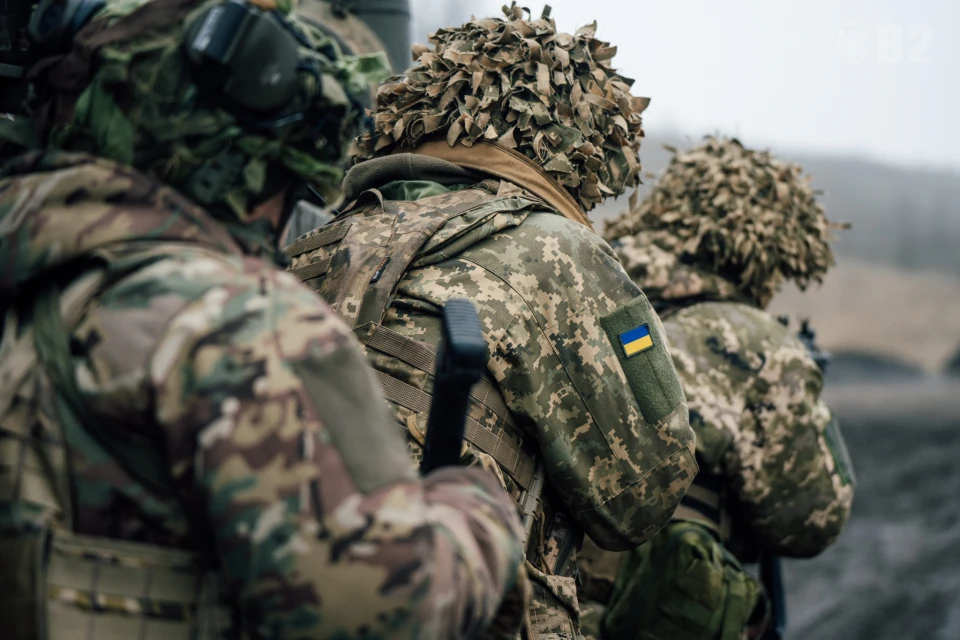
Undoubtedly, the main guarantor and reason why Ukraine is still independent is Ukraine’s Armed Forces. Without them, the war, which has now lasted for 1,097 days, could have ended long ago and certainly not in Ukraine's favor. However, the story of the Ukrainian army during this war is not just about heroism; it’s also about evolution: from chaotic resistance relying on volunteers and outdated equipment to one of the most powerful armies in Europe, equipped with millions of drones and F-16 fighter jets.
At the time of the full-scale invasion on February 24, 2022, the Ukrainian Armed Forces were not prepared for a war of such scale. The army consisted of around 300,000 personnel and relied on Soviet-era equipment — T-64 tanks, BTR-80 APCs, and artillery systems like the Giatsint — and had only partially modernized after 2014 with domestic developments, such as the Stugna anti-tank missile system, the Neptune missile, and some upgrades to old equipment. Russia, on the other hand, deployed about 200,000 soldiers (currently, there are around 600,000 Russian troops in Ukraine) with modern T-90 tanks, Iskander missiles, and air superiority that far surpassed Ukraine's. Analysts predicted a quick collapse. However, within the first weeks of the war, it became clear that the key role was played not only by the regular military but also by the people's resistance. Volunteers literally saved the front line: they raised funds for body armor, DJI Mavic drones, thermal sights, and vehicles. The battles for Kyiv, Kharkiv, and Chernihiv were won thanks to this effective synergy between the army, territorial defense, and civilians, just as it had been in 2014-2015.
By the summer of 2022, the situation began to change. Western aid — initially Javelins and NLAWs, and later armored personnel carriers and HIMARS — enabled the Ukrainian Armed Forces to shift from defense to counteroffensives. The liberation of Kharkiv and Kherson demonstrated that Ukraine could not only hold the line but also win. Gradually, the Ukrainian army was equipped with Western tanks and modern air defense systems (including Patriot). Volunteers gradually took a backseat (though still indispensable), and the state began to establish its own production: by 2023, Ukraine was producing hundreds of thousands of FPV drones — cheap but lethal to enemy equipment. By the end of 2024, the country reached 1.5 million drones per year, becoming a global leader in their combat use. Drones replaced the shortage of artillery shells, destroying Russian tanks and supply depots with a level of precision unimaginable at the beginning of the war (currently, 85% of Russian equipment and soldiers are destroyed by drones). The defense industry also grew significantly, with a third of the weapons now being of domestic production. The culmination of this transformation of the Ukrainian Armed Forces came with the arrival of F-16s in August 2024, complementing Ukraine’s Soviet-era fighters.
According to estimates by the British RUSI, today the Ukrainian Armed Forces have become an army that, in terms of combat experience, adaptability, and technology, is only surpassed by a few NATO countries in Europe (though in terms of numbers and combat experience, it surpasses all of them), and in terms of drone usage intensity and hybrid tactics — has no analogues.
However, this power comes with its cost and limitations. The first challenge is mobilization. At the start of the war, volunteers were plentiful: over 100,000 people joined the army within three months. But by 2023, enthusiasm waned, and significant losses forced the government to tighten conscription. In 2024, a new law lowered the conscription age to 25 and increased fines for evasion, which sparked debates in society due to cases of "busification" — the name given to forced mobilization under an accelerated procedure. People were tired, the economy suffered from a lack of workers, while the front needed fresh forces. Moreover, servicemen are just people who have families and simply want to rest. However, demobilization in wartime remains just a conversation, without clear service terms.
The second challenge is dependence on allies. While Ukraine is increasing its own production (for example, Neptune missiles, Bohdana self-propelled artillery, artillery shells, and drones), key systems such as Patriot, HIMARS, and F-16s come from the West. Delays in deliveries, such as the case with shells in 2023 when the EU failed to fulfill its promise of 1 million units, or political debates in the U.S. regarding funding, put the Ukrainian Armed Forces in a vulnerable position. Additionally, Trump hints at reducing aid if Kyiv does not engage in negotiations.
The third and most obvious challenge is the size of the Russian army. Russia, despite its losses (over 750,000 killed and wounded), has a population four times larger than Ukraine’s and an economy fueled by dollars from vast reserves of oil and gas. Its army, although less adaptive and motivated, relies on mass: in 2024, Putin mobilized another 300,000 people, and the production of drones like the Lancet, Geran-2, and missiles reached an industrial scale. Additionally, since autumn, soldiers and weapons from North Korea have been added, with which Putin has started to form a closer alliance. Therefore, Ukraine is not only fighting Russia, but also forced to maintain a fragile balance between defense, offense, and the internal survival of the country.
The war also accelerated reforms in the Ukrainian Armed Forces, bringing them closer to NATO standards. After 2014, a shift from the Soviet model began — in 2016, the Roadmap for decentralization of command was launched, and since 2022, under the pressure of the full-scale invasion, the Ukrainian Armed Forces implemented NATO-style command systems, rank classifications, and small unit tactics, enabling quick responses on the battlefield. Logistics were restructured based on Western models with digital accounting and hubs, and training was reduced to 6-8 weeks, focusing on survival and technologies like drone management. In 2024, recruitment centers replaced the chaotic conscription process, and outdated leadership in certain units was replaced by younger officers with Western education. The transition to a "corps-brigade" system is underway. All these changes have improved the army's combat readiness.
The war is now in a positional phase with elements of local offensives and counterattacks. The frontline stretches for thousands of kilometers (monitoring the Belarusian border also consumes military resources), but key battles are concentrated in a few directions. The hottest spot is the Donetsk region, particularly the Pokrovsk sector. Here, Russian forces are attempting to encircle Pokrovsk — an important logistics hub for the Ukrainian Armed Forces. They are advancing from the south and east, getting within 6-7 kilometers of the city, and trying to cut off supply routes. Capturing Pokrovsk would open a path for the Russians to the Dnipropetrovsk region, but the Ukrainian Armed Forces are fiercely resisting, holding them off with artillery and drones.
Another difficult area is the Kurakhove region, further south. After the fall of Vuhledar in October 2024 and the advance toward the Kurakhove Power Plant, Russian troops nearly closed off the operational encirclement — the so-called “Kurakhove cauldron.” Their goal is to establish control over the southern part of the Donetsk region and reach Velyka Novosilka, which is in a semi-encirclement. If successful, this would weaken the Ukrainian defense at the junction of Donetsk and Zaporizhzhia regions. Meanwhile, the Ukrainian Armed Forces are trying to hold their positions, relying on fortifications and counterattacks by small groups.
In the northern part of the Donetsk region, fighting continues for Chasiv Yar and Toretsk. Russia aims to capture these cities to advance towards Kostiantynivka and then the Sloviansk-Kramatorsk agglomeration. So far, Russian progress is slow: Chasiv Yar remains under the control of the Ukrainian Armed Forces, although its southern outskirts are under heavy pressure, and Toretsk is partially occupied. Success here depends on whether Russian troops can concentrate their reserves, as their losses are enormous.
A separate theater of operations is in the Kursk region of Russia. In the early days, the Ukrainians managed to hold about 1,000 km² of territory, but this number has now halved. Russian forces have regained several villages and are pressuring Sudzha from the southeast. Their goal is to push Ukrainian forces beyond the state border, destroying the foothold. The Ukrainian Armed Forces are responding with counterattacks. Holding Kursk drains Russian reserves and serves as an additional bargaining chip in negotiations, but it also risks spreading forces thin.
In the south, the situation on the map may not be as noticeable, but intense fighting is taking place due to constant artillery shelling and Russian attempts to advance further. Additionally, in the Kharkiv region, Russian attempts to capture Kupiansk have intensified. Along with this, frontline cities and villages on the border with Russia are constantly suffering from Russian shelling.
As for the Ukrainian counteroffensive, the Ukrainian Armed Forces have the potential to regain the initiative, but not everywhere. In the Kursk region, new attacks could push the Russians back from Sudzha, preserving the foothold. In the east, local operations are possible — for example, regaining positions near Chasiv Yar or Vremivka, where Russian troops recently advanced. However, for a large-scale offensive like in 2022, there is a lack of reserves and Western weapons. According to analysts' estimates, a new large-scale counteroffensive is unlikely before the summer of 2025, when additional F-16s arrive and fresh brigades are formed. However, by that time, everything could change due to the peacekeeping initiative of Ukraine's largest ally.
Peace talks: from 'we've been here before' to 'this time it must work'
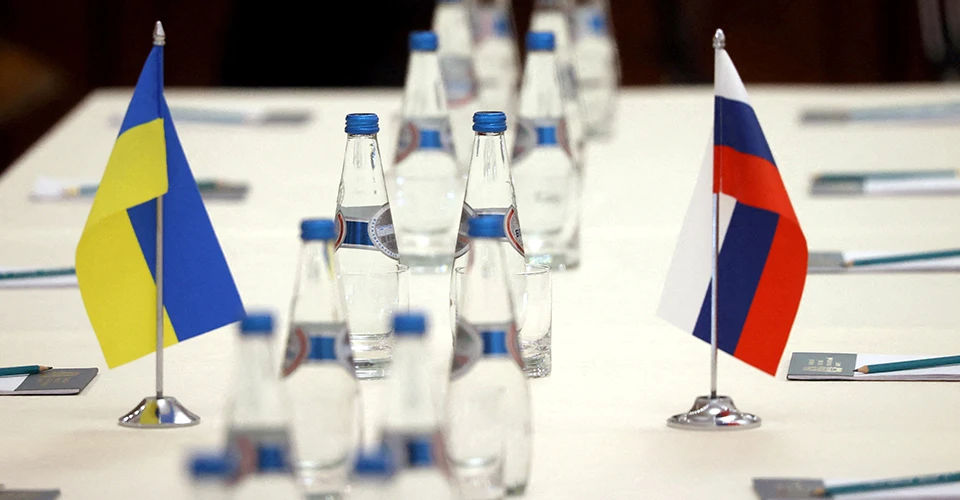
With Donald Trump coming to power in recent months, and especially in the past weeks, the war in Ukraine has once again found itself at the center of international politics and attention due to new statements about the possibility of peace. This time, the tone of the discussion is set not only by Kyiv and Moscow, but also Washington, where the newly elected U.S. president is actively promoting the idea of a peace agreement, which many of his opponents see as Ukraine's capitulation. However, to understand what is happening, it is worth recalling previous attempts at agreements — the Minsk agreements and the Istanbul negotiations.
The Minsk agreements, signed in 2014 and 2015, became the first major step toward resolving the conflict in Donbas after the annexation of Crimea and the beginning of the war in eastern Ukraine. They envisioned a ceasefire, the withdrawal of heavy weaponry, the exchange of prisoners, and political reforms, including a special status for certain districts of Donetsk and Luhansk regions. However, these agreements did not bring peace. Russia used them as a tool to pressure Ukraine, interpreting the points in its favor, while Kyiv insisted on the full implementation of security provisions before political concessions (i.e., security guarantees, which are still a sticking point in all negotiations). Ultimately, Minsk became a symbol of a frozen conflict, which did not stop hostilities but merely postponed the escalation that exploded in 2022.
After the full-scale invasion, a new attempt was made — the Istanbul negotiations in March-April 2022. At that time, Russia put forward ultimatum demands: Ukraine’s neutrality, renouncement of NATO, recognition of Crimea as Russian, and the "independence" of the so-called DPR and LPR. Ukraine proposed a compromise — neutrality in exchange for security guarantees from several countries, but without territorial concessions. The draft agreement, as later became known, was discussed until June but fell apart: Kyiv refused after the discovery of atrocities in Bucha and due to the belief that Russia would not honor its commitments, while Moscow claimed that Ukraine "retreated under Western pressure." Thus, Istanbul remained yet another example of how peace initiatives were shattered by mutual distrust.
Now, in February 2025, a new factor has emerged on the horizon — the controversial businessman-politician Donald Trump. After winning the 2024 elections, he has repeatedly stated that he will end the war "in one day," although his advisors later adjusted these expectations to "months." Trump has already held phone calls with Vladimir Putin and Volodymyr Zelenskyy on February 12, calling them "great" and assuring them of the "possibility of ending this bloody war."
But the biggest surprise for the public was the restoration of direct diplomatic relations between the U.S. and Russia, specifically the public meeting in Saudi Arabia between Secretary of State Rubio and Foreign Minister Lavrov (Reuters reports that there were numerous private meetings beforehand). These talks took place without the participation of Ukraine and Europe, and Zelenskyy even stated that he was unaware of the planning. In other words, behind the backs of the Ukrainians and Europeans, the Americans began negotiating peace, which immediately strained relations between Washington and Kyiv, as well as with other European capitals.
According to media reports, Trump's team is developing a three-step plan: a ceasefire, elections, and then a final peace agreement. This means that the line of demarcation would currently follow the present front line. Trump also supports the idea of a demilitarized zone with peacekeepers but insists that they should be provided by Europe, China, or Brazil, not the U.S. His motivation is clear: he wants to fulfill his campaign promise and go down in history as a peacemaker (and win a Nobel Peace Prize), while also reducing American expenses for supporting Ukraine. Moreover, he demands that Kyiv repay the funds already provided and expects many more in return. This is where the issue with the $500 billion deal on natural resources that Trump insists on arises, as Ukraine has reasonable concerns. And it's not just about the money (although officially, Ukraine received only 100 billion dollars from the U.S., and not as debt, but as a grant).
Zelenskyy shows cautious readiness for dialogue but with clear conditions. He has repeatedly stated that this war is "not something that can be ended with a piece of paper," because we need security guarantees to "avoid repeating Minsk." Zelenskyy is open to negotiations if the USA and Europe ensure protection, strengthen Ukraine’s army, but he rejects the idea of freezing the conflict without mechanisms to deter Russia, calling it the "Afghan scenario." On the other hand, under the influence of Trump, the president has changed his stance regarding the return of Crimea and the entire Donbas by force, now speaking about the power of diplomacy. Why is this?
Firstly, the war has drained Ukraine: tens of thousands dead, hundreds of thousands injured, millions of refugees, and a ruined infrastructure and economy. Secondly, there is uncertainty regarding U.S. support. If Trump doesn’t get the desired agreement, he will blame Ukraine (he has already started, criticizing Kyiv, claiming Ukraine is partly to blame for everything, particularly Zelenskyy, whom he calls a "dictator" for not holding elections and wanting war). This could lead to cuts or freezing of U.S. weapon supplies, the shutdown of Starlink, halting the provision of intelligence data, and more. These are Trump's leverage points. On the other hand, Kyiv could make a bold move - relying entirely on European support and its own capabilities. However, according to various estimates, Ukraine would have about six months. Therefore, Zelenskyy is seeking to use negotiations as a chance to solidify at least part of the gains - such as NATO membership (although he acknowledges this will not happen in the near future, but possibly automatically in the case of another Russian attack) or other real military guarantees of protection - instead of risking losing everything. In other words, Ukraine's main dilemma is how to maximize its achievements without making it look like or actually being a capitulation to the Kremlin's demands. The government also doesn’t want unjust debt obligations to the U.S. that future generations of Ukrainians will have to repay. Therefore, they are seeking a compromise solution.
Meanwhile, Europe is in a state of alarm and confusion. EU leaders publicly state that only Kyiv will decide when and how to negotiate, but behind the scenes, they fear that Trump will strike a deal with Putin, leaving Europe alone with the task of financing Ukraine’s reconstruction (Bloomberg estimates it at over $3 trillion) and its defense. While Trump insists that the deal on natural resources is the guarantee for Ukraine’s reconstruction and protection, as the Americans will be invested in this, France and Germany, who were previously intermediaries in Minsk, have now lost the initiative. Trump's proposal for European peacekeepers is seen by them as an attempt to shift responsibility. Senior EU officials express concerns that "the U.S. does not see Europe’s role in geopolitical issues," which could undermine Western unity. Another worry is Trump’s potential withdrawal of U.S. troops from the European continent, which would immediately weaken Western defense. As a result, Europe has started acting proactively, including the Paris Summit to find common ground with Trump and has developed a plan for peacekeepers in the event of a ceasefire (it is said that there will be 30,000 peacekeepers, although Zelenskyy believes at least 200,000 are needed, which Europe cannot provide without the U.S.).
An important factor in this equation is not only the desires of Ukraine, the United States, and Europe, but also the crucial question of whether the aggressor wants to stop and whether the Kremlin is ready for peace. Publicly, Moscow constantly welcomes negotiations, claiming that it is ready for dialogue, although it opposes NATO peacekeepers. However, real intentions raise doubts. Putin has repeatedly stated that his goal is the complete subjugation of Ukraine, so the partial annexation of four regions in 2022 only increased his ambitions. Experts note that the Kremlin sees Trump’s haste as an opportunity to extract maximum benefit for itself – for example, recognizing the occupation or lifting sanctions – without making any strategic concessions. Russian losses (over 750,000 dead and wounded) have not forced Putin to retreat, and his time-stalling tactic, as in Minsk, suggests that peace for him may just be a pause before a new offensive. Moreover, Russia’s economy, despite apparent stability, has become very fragile: prices are rising, interest rates are high, and there is a shortage of labor. As illustratively stated by CNN, it is "holding up on cocaine and steroids," and this cannot last long. Therefore, Trump has room for maneuver – to tighten sanctions if negotiations are rejected, or to ease them if an agreement is reached, which is exactly what the Kremlin is now seeking.
So, the current statements about peace are a complex game. Trump is pressuring everyone to achieve a quick result, Zelenskyy is maneuvering between the survival of the country and principles, Europe fears being left on the sidelines, and the Kremlin pretends to be ready for dialogue, waiting for the right moment. Minsk and Istanbul showed that without real guarantees, an agreement could just become another illusion. Whether a real peace can be found this time depends on whether the parties can overcome personal distrust, ambitions, and address the true cause of the war – Russian imperialism, compounded by Putin’s desire to restore Russia’s influence as it was during the Cold War. For now, the answer remains up in the air. All this uncertainty, where neither our biggest ally’s position nor our greatest enemy’s true motives, nor Ukraine’s real options are fully understood, can be summed up by the well-known phrase "Quo Vadis" – where are we headed, and is it the right direction? Only our successors will be able to answer this question.
- News











